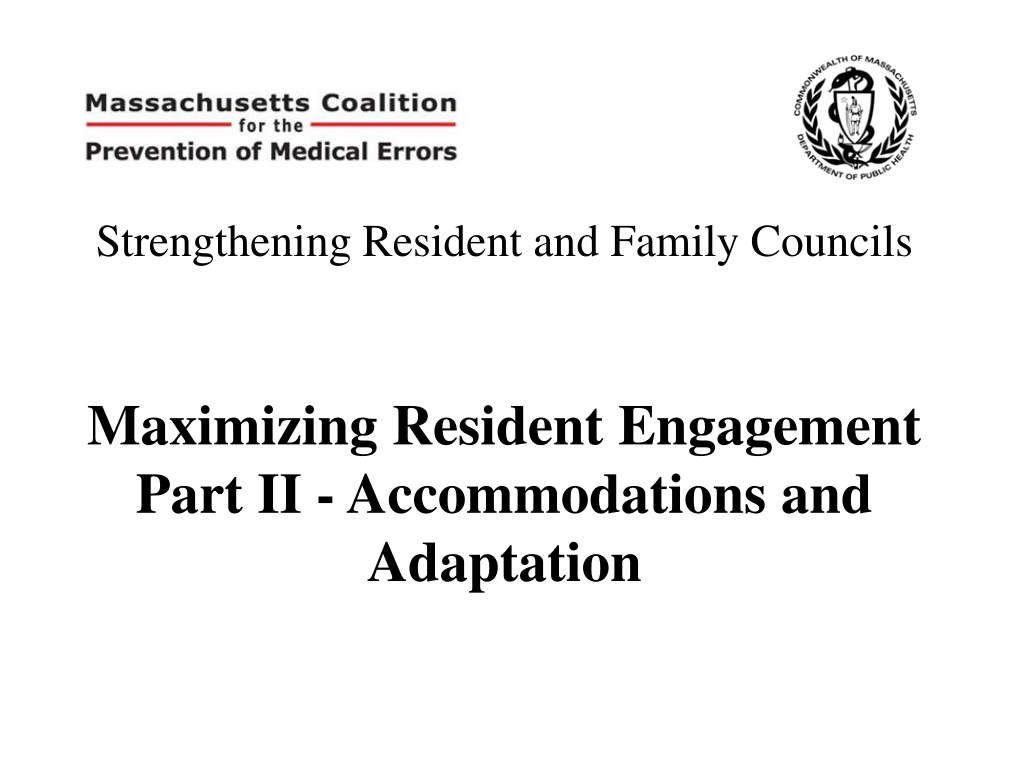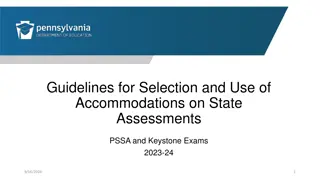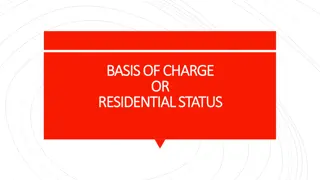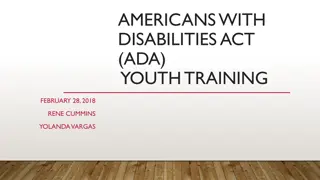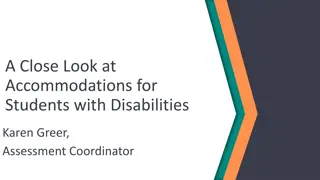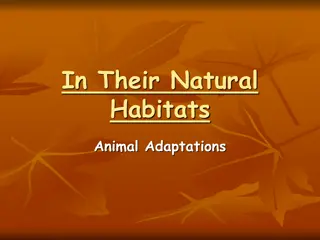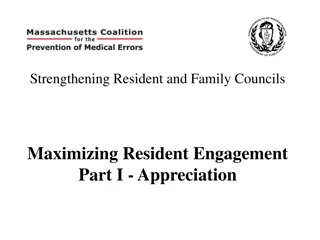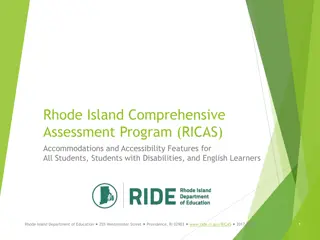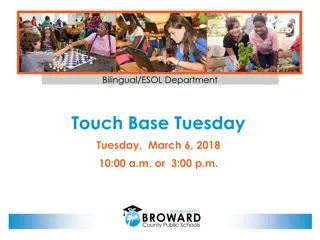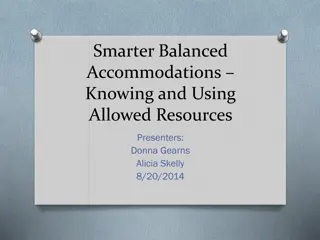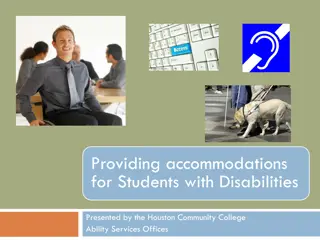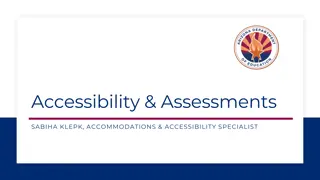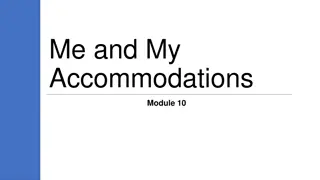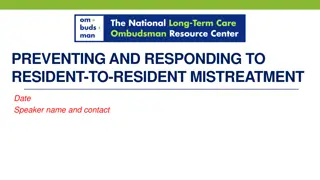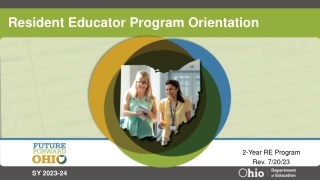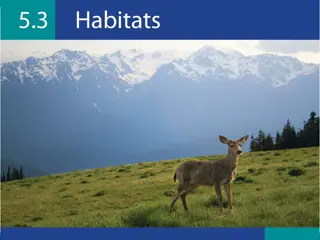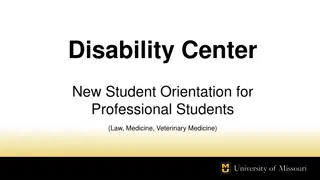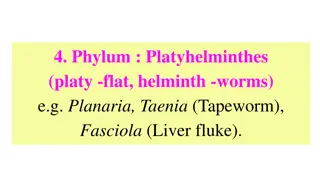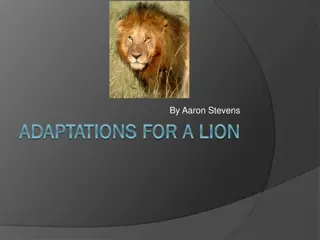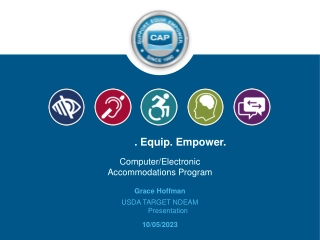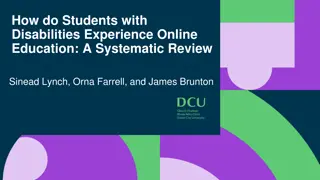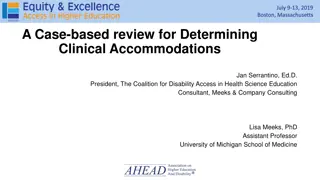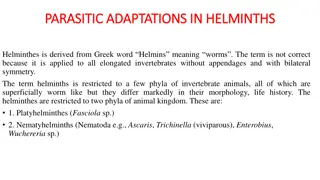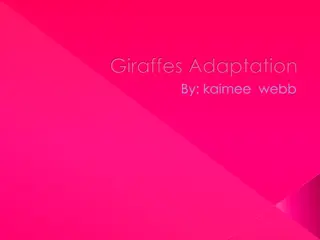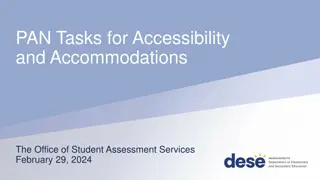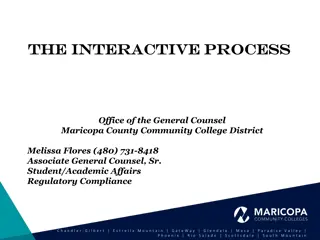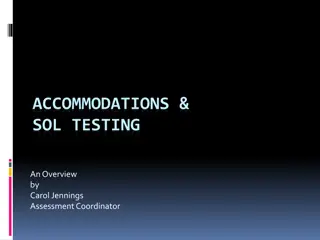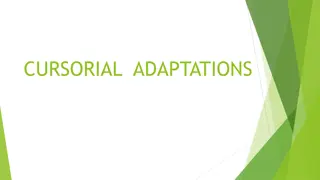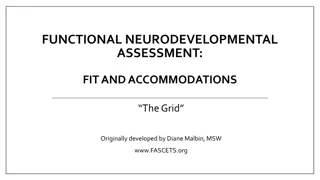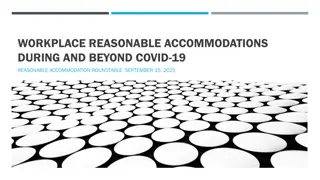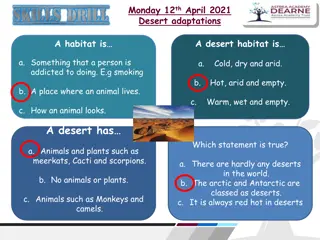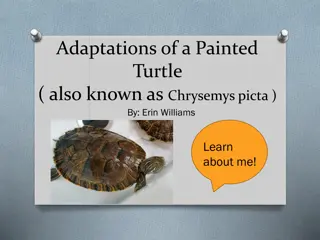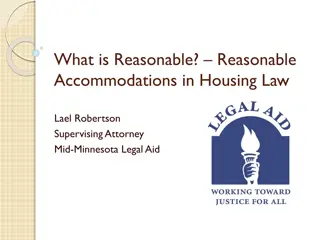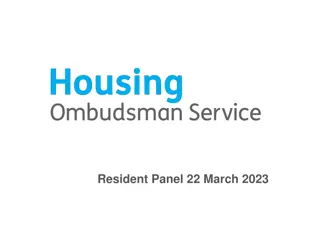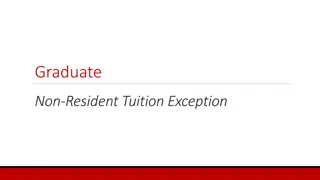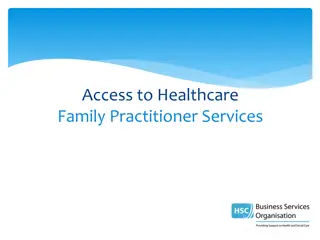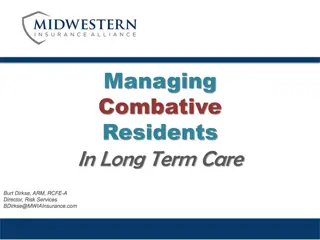Maximizing Resident Engagement Through Accommodations and Adaptations
Strengthening Resident and Family Councils, Part II focuses on engaging residents and families, partnering with nursing homes for improvement, and enhancing residents' quality of life. The session delves into cognitive, visual, auditory, physical/mobility, and group design accommodations and adaptations for better engagement. It also explores skills like active listening as an accommodation and ways to engage others in improvement initiatives.
Download Presentation

Please find below an Image/Link to download the presentation.
The content on the website is provided AS IS for your information and personal use only. It may not be sold, licensed, or shared on other websites without obtaining consent from the author. Download presentation by click this link. If you encounter any issues during the download, it is possible that the publisher has removed the file from their server.
E N D
Presentation Transcript
Strengthening Resident and Family Councils Maximizing Resident Engagement Part II -Accommodations and Adaptation
Introduction Goals Engage residents and families Partner with nursing homes on improvement Improve quality of life for residents
Maximizing Engagement through Accommodations and Adaptation Kate Waldo, CTRS, ACC National Director of Recreation and Guest Services
Objectives Discuss cognitive, visual, auditory, physical/mobility and group design accommodations and adaptations for engagement.
Skills of Active Listening Defined What is body language? The way people communicate through facial expressions, postures, and gestures. What is tone of voice? The way people speak to each other including pitch, volume and intonations. What is paraphrase? Repeating back in one s own words what the speaker has said to ensure understanding of the facts, feelings or both. What is inquiry? Using open or closed questions to clarify or gather additional information.
Listening Deeply to Understand How might using the skills of Active Listening as an accommodation for cognitive or hearing impairments?
Active Listening as an Accommodation Body Language As people lose other senses and abilities the capacity to read body language often increases. Tone of Voice A person may not understand the words you are saying but they can often grasp emotion through tone of voice. Paraphrasing Allows for validation and understanding of a person who is having a hard time expressing herself. Allows for others to hear the ideas of someone who speaks at a low volume. Inquiry You can gage the level and complexity of your question to match a person s cognitive abilities.
Engaging Others in Improvement Strength and ability based accommodations and adaptations
Cognitive Accommodations and Adaptations What do you need? What have you tried? Suggestions: Active Listening Representative objects Small groups Flip charts
Visual Accommodations and Adaptations What do you need? What have you tried? Suggestions: White boards Written and distributed agendas (Large Print) Reading test for universal font size Flip charts Pass items around the group
Auditory Accommodations and Adaptations What do you need? What have you tried? Suggestions: Use of microphones Use of pocket talkers A quiet location with no distractions Karaoke machines Seating arrangements
Physical/Mobility Accommodations and Adaptations What do you need? What have you tried? Suggestions: On unit/neighborhood meetings Small gatherings in a resident s room Use larger spaces Wide doorways Card holders
Group Design Accommodations and Adaptations What do you need? What have you tried? Suggestions: Use of committees Recreation Planning, Social, Welcome Wagon, Food Advisory, Fundraising, Charity and Community Outreach, Education, etc. Use of individual meetings Neighborhood meetings Parallel programs Variety of frequency and duration
Part I- Maximizing Engagement through Appreciation Part II-Maximizing Engagement through Accommodations and Adaptation Kate Waldo, CTRS, ACC National Director of Recreation and Guest Services
Commitments for Next Steps What is the positive image you are moving towards? Visualize the positive change. Choose one or two things to implement starting today. Include the Residents in the process and decision making; seek their input and involvement. Do this with the Residents not to the Residents.
